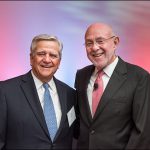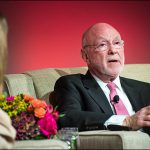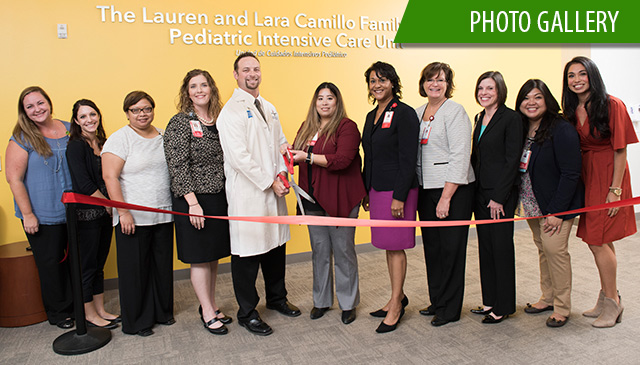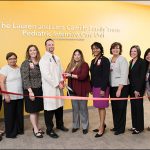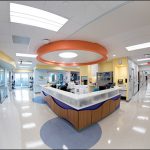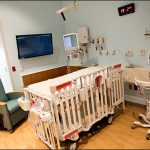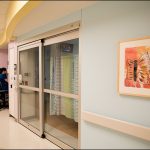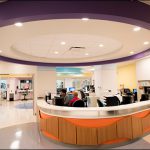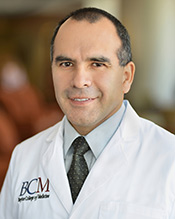November 21, 2017
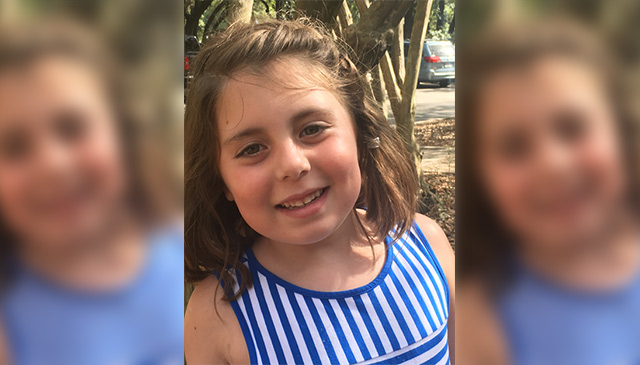 Six-year-old Molly Malinsky and her parents have a lot to be grateful for this holiday season. After their daughter was diagnosed with a seizure disorder at four months old, Molly is now seizure free, a miraculous outcome that her family credits to Texas Children’s world-class neuroscience team.
Six-year-old Molly Malinsky and her parents have a lot to be grateful for this holiday season. After their daughter was diagnosed with a seizure disorder at four months old, Molly is now seizure free, a miraculous outcome that her family credits to Texas Children’s world-class neuroscience team.
When the Malinskys learned that their daughter’s physician Dr. James Riviello – who had treated Molly since she was four months old – joined Texas Children’s as the associate section head for Epilepsy, Neurophysiology and Neocritical Care, it was a no brainer for the New Jersey family to travel to Houston to reunite with Riviello.
“Dr. Riviello is one of those amazing doctors who is not only knowledgeable, well respected and professional, but above all, cares deeply about his patients and their families,” Rebecca Malinsky said. “We followed Dr. Riviello from NYU to Columbia and now to Texas Children’s so our daughter would continue to receive the best care.”
When Molly was first diagnosed with epilepsy, she was prescribed seizure medication which seemed to work. Molly had no seizures for over a year, but when she was weaned off of her medication, Molly’s seizures returned. “The seizures were getting worse and more frequent,” Malinsky said. “My daughter would have 15 seizures in an hour and three to five seizures at school even when she was back on her medication, which was very scary.”
After five failed medication trials, the only option remaining for Molly was brain surgery. After her parents met with Riviello, Chief of Neurosurgery Dr. Howard Weiner, and neurosurgeon Dr. Daniel Curry to discuss Molly’s treatment plan, the team determined Molly would be a good candidate for brain surgery.
On October 26, 2017, Molly underwent laser ablation surgery, a minimally invasive procedure pioneered by neurosurgeons at Texas Children’s that uses an MRI-guided laser probe to identify and destroy lesions deep in the brain that cause seizures. As the first hospital to perform laser ablation surgery in 2010, Texas Children’s has performed more than 150 of these surgeries, making it possible to treat some of the toughest cases of epilepsy, and put the brakes on damaging seizures.
“The results are very diagnosis and patient specific,” said Curry, director of Pediatric Surgical Epilepsy and Functional Neurosurgery, who pioneered and performed the laser ablation surgery on Molly. “But for something like hypothalamic hamartoma, a particularly difficult disease to treat, it has taken success rates in curing the child’s seizures from under 50 percent to about 80 to 90 percent, so it’s been a significant change.”
MRI-guided laser ablation has not only increased the safety of epilepsy surgery, especially in cases where the targets are far from the surface of the brain, but has drastically improved recovery time. Many children go home the next day after surgery, seizure free. For Molly’s parents, their daughter’s outcome is truly remarkable.
“Since Molly’s surgery almost a month ago, she has not had a single seizure,” Malinsky said. “Her behavior has improved, her ability to learn and retain information at school has returned. Our daughter was able to go trick or treating for Halloween just four days after her brain surgery, which was pretty amazing.”
The Malinskys will return to Texas Children’s in February for Molly’s three-month followup. Meanwhile, they are grateful to Drs. Riviello, Curry and Weiner, and the hospital’s entire neurology and neurosurgery teams for the exceptional level of care, compassion, professionalism and teamwork they delivered to their daughter.
“Between our first visit to Texas Children’s in August and Molly’s surgery, everyone treated our daughter with compassion and offered ways to be helpful in the immediate and distant future as Molly’s treatment plan began to unfold,” Malinksy said. “I could not imagine this journey without the shared and genuine support of Texas Children’s amazing Neurology and Neurosurgery teams. Clearly, you have recruited the best doctors in the country.”
Click here to learn more about Texas Children’s Comprehensive Epilepsy Program and laser ablation surgery.







 Six-year-old Molly Malinsky and her parents have a lot to be grateful for this holiday season. After their daughter was diagnosed with a seizure disorder at four months old, Molly is now seizure free, a miraculous outcome that her family credits to Texas Children’s world-class neuroscience team.
Six-year-old Molly Malinsky and her parents have a lot to be grateful for this holiday season. After their daughter was diagnosed with a seizure disorder at four months old, Molly is now seizure free, a miraculous outcome that her family credits to Texas Children’s world-class neuroscience team.

